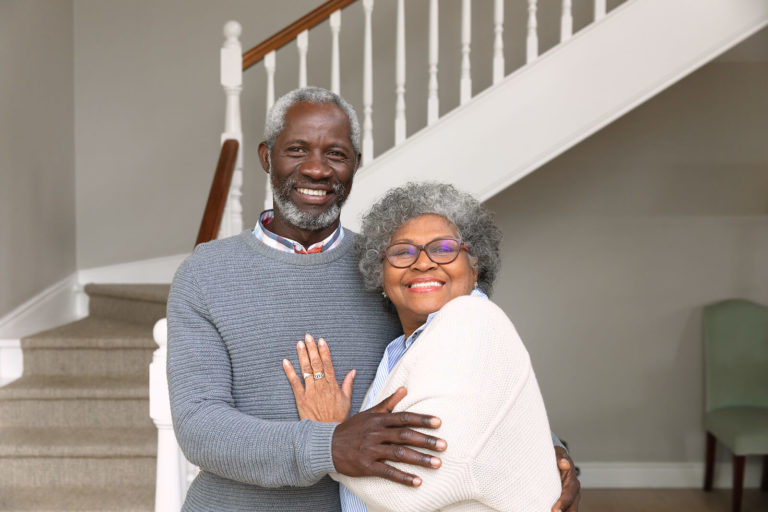According to AARP, 87 percent of adults aged 65 years and older want to remain in their home as they age. It’s a natural inclination—most prefer the comforts of home over new or different environments.
“We have attachments to our homes, neighborhoods, friends, families,” says Karen Smith, OT, CAPS, Approved Provider Program Manager Practice Associate for the American Occupational Therapy Association, Bethesda, Md. “We are comfortable there and often don’t want to or see a need for change. There is a sense of autonomy and control for many who wish to remain at home as well as a perceived quality of life enhancement.”
But remaining at home might require some aging in place home modifications. As people get older, their risk of falling increases. Every year at least a quarter-million older adults are hospitalized for hip fractures, and one out of five falls causes serious injury.
Accessibility in a home, or lack thereof, could prevent some from remaining in their home as they age.
Thankfully, there are simple home modifications that can be made, Smith says, to help seniors safely age in place.
Local builders, architects, occupational therapists, aging in place specialists, and other healthcare professionals can help determine and design the key features that will create the best and safest environment to help your loved ones maintain independent living long term.
7 must-have home modifications for seniors
Bars, benches, and chairs in the bathroom
- Grab Bar: Installing grab bars near the toilet and shower, or bathtub can help improve stability, sitting, and standing. These are relatively inexpensive modifications that help prevent falls and slips.
- Bathtub Transfer Bench: Another modification would be to install a bathtub transfer bench. This would give someone the option to sit on the bench when getting into or outside the tub. Being seated when getting in and outside of the tub will significantly reduce the occurrence of bathtub falls.
- Bathtub Chair: You might also consider a bathtub chair allowing users to sit inside the bathtub while showering or using it as a way to get in and out safely, similar to the bathtub transfer bench.
Stairway railings
While stairway railings are standard in homes, you can make moving up and downstairs safer for seniors by adding the railing on both sides. Also, ensure that it runs the entire length of the staircase, as some don’t.
Bathroom accessibility
As you age, the likelihood that you’ll need a walker or wheelchair increases. That’s why having access to a bathroom on the first floor is crucial for seniors. It should be wide enough for wheelchair accessibility or the use of a walker. The modification might require a renovation project and/or door to make this possible.
First floor bedroom
If your senior can have a bedroom on the first floor, that’s ideal. Whether there’s already a bedroom available or one that can be converted into a room, this modification can make it easier to stay home longer. Some might turn a guest room, office, or dining room into a downstairs bedroom. Depending on the space, a minor renovation project might be required.
No stair entrance
Ensuring that the home has at least one entrance that doesn’t require steps can help seniors navigate in and out of the house easier. Stairs are often an impediment to independent living as you age. Common workarounds include adding a wheelchair ramp to the home, steps with shorter height or a mechanical lift.
Reachable storage
Seniors need to reach everyday items in the kitchen, bedroom, bathroom, and other areas of the home independently. If things are stored in high places, they might be unable to reach them or put themselves in harm’s way attempting to do so.
Instead, you want to improve accessibility with storage options based on their current mobility. Even if they aren’t using a cane, walker, or wheelchair, you still don’t want them to rely on step stools, ladders, or other supports to reach needed items.
Seating throughout the home
While you might think of living room sofas, chairs and beds when you consider having somewhere to sit in the home, seniors need more than traditional seating.
Think about times when they might need to stand for an extended period. Instead of having to stay on their feet, ensure there is seating available for these times such as:
- Working on meal preparation tasks: Cooking requires an extended period of standing in the kitchen. You want comfortable and safe seating available for all of the steps involved in meal preparation and cooking.
- Bathroom tasks: Between brushing your teeth, washing your face, taking a shower, and all of the other tasks that happen in the bathroom, time on your feet can be longer than you’d like it to be. Having seating in the bathroom makes this time easier for seniors.
Aging in place home modification benefits
There are a myriad benefits for seniors to remain at home, Smith says, “including the comfort with the familiar and established supports from neighbors, friends, families, and organizations that we are a part of.”
In addition to that, she adds, there are often financial benefits to aging in place, rather than moving to a senior assisted living facility, which can be costly. Home modifications need to be done right, but they don’t need to be budget-busters. And having a safe home is priceless.

